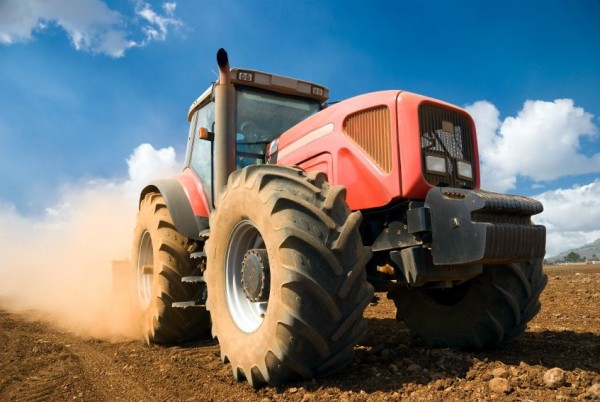 Big Ag gets its way.
Big Ag gets its way.
[See update below.]
Surprising no one–but disappointing many–House energy chief Henry Waxman (D-Calif.) has caved in to the demands of the the agribusiness industry over the climate bill.
In reality, he had little choice if he wanted his legislation to get through the House. For more than a month, House Ag Committee Chairman Collin Peterson (D-Minn.) — an unabashed proponent of agribusiness interests–has thundered and roared about how no climate bill could get through the House without containing his agenda.
He had the votes to back up his bluster–26 Democrats on his committee, plus another 20 to 25 rural reps who shared his concerns. Without Peterson’s support, Waxman-Markey was a dead letter. There’s no guarantee that Peterson can now deliver enough of those rural votes to push the bill through. But with Peterson’s support sewn up, the legislation has a reasonable chance of surviving Friday’s vote.
“Not all of my House ag people will vote for it, but there will be a good majority,” Peterson told The New York Times. “I think the votes are going to be there.”
The question for greens now is, just how bad is this compromise? How much does it undercut the legislation’s underlying goal of slashing greenhouse gas emissions and stabilizing the climate?
The compromise has two major planks: 1) the EPA will be forbidden for five years from assessing the indirect land-use effects of ethanol, a topic that sends the ethanol-besotted Peterson into literal fits of rage; and 2) the USDA, not the EPA, will administer the market for ag-related offsets under the bill’s cap-and-trade scheme.
The ethanol bit is a travesty, to be sure–no serious person with knowledge of the topic denies that diverting ever-growing amounts of U.S. corn into biofuel inspires farmers in other places, including ecologically precious rainforest regions, to put more land under the plow. But here’s the key: As I wrote at the time of their release, the EPA’s proposed land-use rules didn’t really change much on the ground. The 2007 Energy Act had already grandfathered in 15 billion gallons of corn-based ethanol–and producers only churned out 9 billion gallons in 2008. That means that despite Peterson’s fulminations, the EPA’s proposed rules would do nothing to impede a stunning 66 percent leap in ethanol production over 2008 levels, indirect land use be damned. So repealing it won’t change much on the ground.
So in real-world terms, the compromise hinges on the offset piece. And here, too, we have a travesty–and this one could have real effect. It’s impossible to get much of an idea yet of just how bad things are–Waxman has yet to release specific language about ag offsets. But the compromise raises serious questions. The EPA will still have some role in the process; we don’t no yet what that role will be. But its authority on judging ag offsets will evidently be secondary to that of the USDA.
[UPDATE: Grist’s Kate Sheppard has just spoken to an Energy and Commerce Committee staffer who said that we can expect precise language on the ag compromise to emerge tonight, and that the USDA will “write rules for the domestic [ag] offset program” while the EPA will writes rules for all other offsets, including foreign agricultural offsets.]
No one disputes that the USDA, with its extensive network of offices in rural areas nationwide, should have a role in administering ag offsets. But the idea that the agency should perform the lifecycle analyses needed to determine what really constitutes a carbon offset is ridiculous.
Meredith Niles, coordinator of the Cool Foods campaign for the Center for Food Safety, put it to me like this: “the USDA’s mission statement is to promote U.S. agriculture. The EPA’s is to protect the environment. It makes no sense for the USDA to run such a critical environmental program.” In other words, the USDA has a bit of a conflict of interest here: an agency who’s very DNA compels it to promote industrial agriculture is being asked to curb its excesses.
Of course, the USDA already does perform an environmental-protection role–it administers the various conservation programs set forth in the Farm Bill. And here, it’s record is spotty at best. In September 2007, the Environmental Working Group released a paper highly critical of the USDA’s conservation efforts, sourced largely by critical reports from the Government Accountability Office and other federal agencies. The EWG study concluded that the USDA’s efforts to curb soil erosion through conservation programs has largely failed. The authors put it bluntly:
Due to lax standards and implementation problems, the conservation compliance program is missing cost-effective opportunities to make further, substantial reductions in soil erosion on U.S. cropland.
The idea that the USDA has a conflict of interest in administering environmental programs makes me think of its recent performance around swine flu. Despite much compelling evidence that the deadly strain emerged from U.S. factory hog farms, USDA chief Tom Vilsack rushed to the defense of the pork industry. And why not? As currently structurd, his job is to promote U.S. farm interests, not protect public health.



